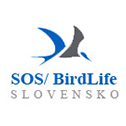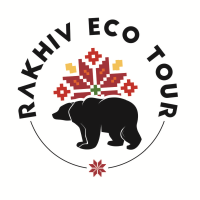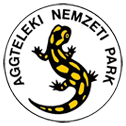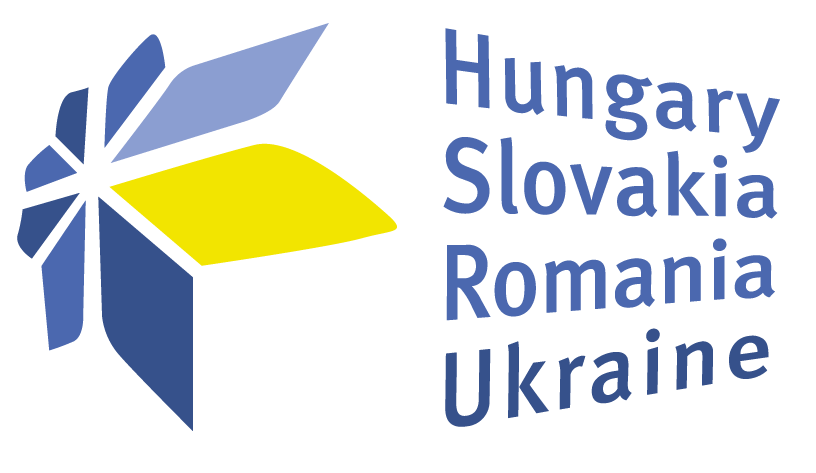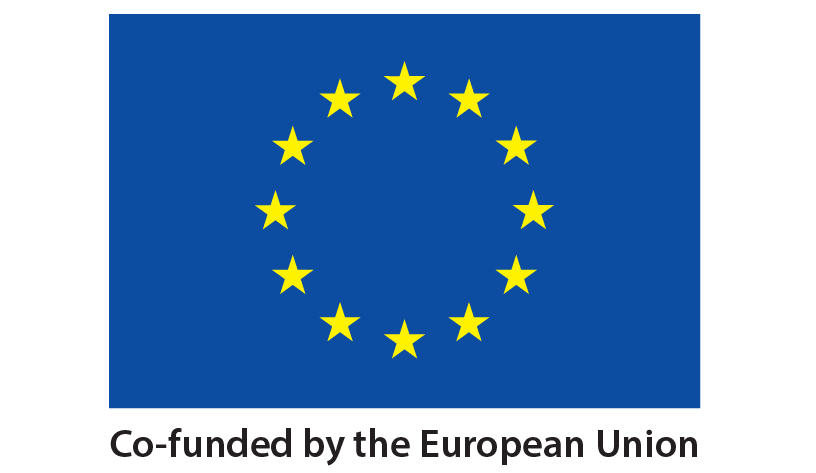PUBLIC CONSULTATION
Based on previous initiatives on connectivity for wildlife in the Carpathians, but mainly on ConnectGREEN project outputs https://www.interreg-danube.eu/approved-projects/connectgreen, OBWIC project develops a methodology for IDENTIFICATION and DESIGNATION of ecological corridors of transboundary interest in the ENI Carpathians (Hungary, Slovakia, Romania, Ukraine), in a project area which covers approximately 4 million ha. Umbrella species used for connectivity model are brown bear, Eurasian lynx and grey wolf. The methodology is split in two main phases: identification of ecological corridors and designation of ecological corridors. For identification and designation of wildlife corridor (i.e. large carnivores) some tools and standardisations used in ConnectGreen project will be adapted also for OBWIC in order to create a synergy of these projects.
Participation as a member of the Consultative Forum is open to any interested party based on a written request and officially addressed to the Working Group at: [email protected]
The Transboundary Expert Group now encourages the registration of as many stakeholders as possible in the Consultative Forum.
If you have knowledge of other persons, institutions or organizations, who may be interested in this process, we encourage you to redirect to them the content of this announcement.
COMMENTS AND ANSWERS
All comments (relevant) and the responses of the Transboundary Expert Group will appear in a report within 30 days from the end of the consultation process.
|
Section |
Comments / Suggestions |
Answer |
|
Context |
Our region = unclear wording An estimated 8000 brown bears live in Central and South-eastern Europe – emphasizing this information about bears is confusing. At first, one is not sure if the following sentence regards bears only or all large carnivores. strictly protected = not all three species of LCs are “strictly protected” in all European countries |
Europe (excluding Russia) ecologically critical, protected and culturally significant |
|
Terminology |
The width of the corridor: reparation: The width of the corridor for large carnivores should not be less than 500m. 500 m: – it may happen that we will not be able to fulfil this requirement always and everywhere. In literature, there are some minimal parameters for ecological corridors of different importance (local, regional, national, transnational…) – Lets not limit this to a certain number, but let’s express the parameters/ standards for minimal and optimal width: 50m – 300m or even up to 500m. Optimal width should be derived from ecological requirements/ demands of the species. – In case it is possible to establish an optimal width, that should be used. In case this is not possible, minimal recommended width should be used. – The importance, purpose and effectiveness of ecological corridor needs to be taken into account. Even some less wide corridors might be very important, e.g. last remaining open areas which are permeable for LC. – Habitat quality also needs to be taken into account. If the habitat quality of the ecological corridor is increased by guiding greenery, watercourse or other landscape features, the smaller width of the corridor is compensated and therefore accepted. In case there are threats present in the vicinity of the corridor, such as plant, logistic centre or housing development, the quality of the habitat is decreased. |
In order to have a sinergy with ConnectGreen Methodology as we assumed, the terminology is intended to be uniform in both projects. This minimal width will be considered as recomandation. Scientific evidence will be added as citation to justify the parameter. |
|
Tools |
Tools -> see the comment regarding software and applications within General remarks at the beginning of the document will be ->rephrase to: maybe or are preferred to be distribution that is most spread out, or closest to uniform – good, but we are likely to have discontinued / scattered distribution in our project area, so in such case we need additional species – we suggest to add: Red deer (Cervus elaphus) Golden jackal (Canis aureus) – located within the project area. It migrates to SK from HU. Inclusion of these two species is important in relation to areas where there is lack of LC data. Data on red deer and golden jackal distribution will help us to cover these areas. Use of Red deer data was attested within AKK project, where it helped to identify migration corridors in areas of small mountain ranges (e.g. Malé Karpaty) and lowland. Its ecological requirements in relation to migration corridors are very similar to those of LC. Supplementary note: large carnivores, red deer and golden jackal should be the species data of which will be used in the model as input data. However, during the filed mapping, which is discussed later, it will be necessary to collect also data on other animal species (wild boar, roe deer, fox…), which will help with verification of corridors‘ functionality or with better specification of corridors‘ borders. Survey123 for ArcGIS – please use this only as an example or recommendation. It is necessary to find more information about it – how to deal with licences for ArcGis online, who is the owner of data collected, its functionality offline in the remote countryside. It is important to speak with the Czech Agency for Nature protection (AOPK) about its usage in ConnectGREEN project (now in the testing phase) (its advantages and disadvantages) |
The tools mentioned in this section are regarded only as an examples that can be used for corridor modelling and data collection. |
|
1.1. Methods of identification and input data selection |
Environmental authorities: This might not be restricted to environmental authorities only. In Slovakia this can also include authorities with the competency over development and construction, District Offices, border controls, etc. |
Some explanation were provided as: Structural criteria mean the criteria which define the morphology of the corridors or core areas in terms of measurable parameters as: length, width, surface, shape etc. Expert means a person qualified to perform specific tasks for modelling/mapping the connectivity network The specific methods as software were metioned just as example, not beeing compulsory. |
|
Add to the list of data: – Since there is no legal basis for implementation of “Natura 2000 eco network” in Ukraine, we propose to include to the list the “Emerald ecological network” – – State border line with Ukraine (some parts of the border are fenced with barbed wire) – Virgin, old-growth and Natural forests (defined by WWF Ukraine); not all of them are included to PAs – Include data of HCVF? |
||
|
For a better understanding “software modelling” or GIS should be used depending on situation. For forest habitats should be used first the existing data at the protected areas and forest Administrations level. Where no available information exists, there should be added CORINE data. Also, based on forest management plans data, a better mapping will be done than only using CORINE data. For hunting units, we have a shapefile of these, without hunting-free ones. |
||
|
1.2.Identification (modelling) of core areas |
General remark: the text is not related to criteria It is necessary to define here a group of parameters = ecological demands / requirements of umbrella species (it does not have to be forests; it may also refer to foraging habitats – a criterion of food source accessibility is especially important in case of LC. General remark: the text is not related to methods Corine Land cover data are not specific and detailed enough, land cover data will be derived from the remote sensing data (satellite images classification). Instead detailed habitat mapping data can be used for Habitat Factors if available. For Anthropogenic Factors – different data sources which can be additional to landcover can be used, such as spatial plans, mining / mineral exploitation plans, electricity distribution network etc. However, this shall be all done in the first step, during preparation of data for analysis / modelling, not through the modelling itself. |
Some wording was changed for clarity of the text. |
|
”Forest edge do not exhibit a continuous line meaning that the core areas limits should not follow exclusively the forest edge limits but also include stepping stone areas.” I recommendable to follow the natural limits or at least the limits from the forest management plans in places were the limits are passing through forests. See if is helpful to use LUCAS data: https://doi.pangaea.de/10.1594/PANGAEA.896282 |
||
|
The comparison made with other European countries should be more detailed. In many countries do not exist large carnivores and by the other hand these have a more fragmented landscape. |
||
|
1.3. Identification (modelling) of wildlife corridors that ensure the connectivity between core areas |
One of the important, if not the most important result of this stage will be identification of bottleneck areas. These are areas where connectivity is very limited to a critical or even zero level, which means, the corridor is discontinued / interrupted by some migration barrier. The limiting factor may be of a discrete nature, e.g. a concrete infrastructure which has barrier effect for target species, but it can be also of a dispersed nature, e.g. land use which inhibits migration, e.g. noise or light smog, scattered settlements, etc. |
Identification of bottle-necks is done in the Section 1.4. |
|
Delete last sentence about appendixes. |
||
|
Were the width of the corridor is less than 500 m or physical barriers will be identified, same measures to ensure the connectivity will be put in place? |
||
|
The measures should refer only to eliminate factors that induces fragmentation (so far the document take into account only infrastructure which indeed produce fragmentation). Further, the measures concern also to the activities, mainly of these not producing fragmentation. From where is taken 500 m parameter? |
||
|
1.4. Mapping of ecological network – model fine tuning |
I believe at this stage, having the model for entire project area of 4 million + hectares, it will not be possible to make field survey for all identified network. Therefore, the expert verification will be done mainly as discussion with experts who will use their best expert knowledge to verify the connectivity model. However, there may be the case that already in this stage we will have some fresh field data which can be incorporated into the model, e.g. will specify better the core areas for species or stepping stones, etc. The chapter is not elaborated in a clear manner. Clear definition of criteria/ parameters for core areas as well as parameters for boundary definition are needed. forest units: to specify whether to take into account the size of “forest units” Field survey methods and desired outputs are needed for both: a) the mapping of target species and b) the mapping of barriers and landscape structures in bottleneck sites to be described in more detail. It is necessary to include example of field data form(s). (=ONE OF THE KEY COMMENTS) Although we may decide a bit later what software / application we will use for collecting, processing, storage and display of data (adaptation of online database Aves Symfony of the Slovak Ornithological Society was planned), we need to be sure in what data we need and how to get them. Before the field mapping itself, it is important to organise a meeting of mappers directly in the field to introduce the methodology and to even take them to a particular place and show them an example of optimal and sub-optimal ecological corridor and to share with them how to fill in the field mapping form in both cases. If possible, we recommend to work with smaller group of mappers to eliminate error rate. Several mobile applications can be used for field mapping as there will be several types of field mapping used (Survey123, LCSI – Wildlife Tracker (https://apkpure.com/lcsi-wildlife-tracker/com.wecode.wildlifetracker), potentially Aves Symphony) It is necessary to clarify the procedure of data handling: We suggest that each country designates 1 person, who will collect data related to that country, translates them if needed, amends the formatting and sends in the form required to 1 person designated within the project, who will collect data from all four countries |
Some wording was changed to clarify terms. Standardized picture includes using the same formatting (.jpg for example), geotagging each picture, includes ruler marks to integrate the size of the object. |
|
What does the term mean: “Standardised pictures”? |
||
|
We underline the necessity that de borders of the ecological corridors to follow the natural limits and for core areas also. |
||
|
Hunting activities are not a fragmentation trigger. By contrary, in the areas where hunting take place there is also poaching control. Hunting free zones are designated based on other criteria than connectivity. |
||
|
2.Designation of Ecological Corridors |
We do not think term designation is appropriate in this context. We would rather use “detailed model of ecological corridors on bottleneck level” instead. Term “designation” would be used in relation to legal designation or similar process which will secure the “respect” for the corridors from different stakeholders. Or maybe the title can be “Detailed modelling and designation…” detailed critical zone: to add the word “identified” critical zones |
The title of section was changed, the term designation was replaced to eliminate confusion into ”Ensuring the Functionality of Ecological Corridors”. Some punctual changes heve been made also (words). |
|
”legal procedure to safeguard the ecological corridors and post monitoring”. What exactly is meant by this? According Governmental Ordinance 57/2007, management measures are established by Ministerial Order. |
||
|
2.1. Methods and input data selection |
In relation to forest management plans, only data on the activities which cause disturbance or change /deteriorate habitats for target species are relevant, such as logging operations. roe deer: as mentioned higher above, umbrella species should include LC, red deer and golden jackal. Data on other species occurrence (roe deer, fox, etc.) should be collected within the bottleneck filed mapping as a supportive data. Data on anthropic disturbances – the form needs to define what exactly needs to be described in relation to “disturbances |
Regarding the genetic analyse proposed in this section, during the implementation of the OBWIC project only in Hungary some genetic analysis will be done. Additional species were included beside bear, wolf and lynx to collect field presence data. These species are golden jackal and red deer. Some other small addition were made to the text according to the comments. |
|
This data collecting stage will enhance the results, adjusting the model and providing strong evidence for decision makers. |
||
|
Why stepping-stone areas are more critical for connectivity? Why only large carnivores? |
||
|
2.2. Detailed mapping of bottle-necks |
More detailed description of methodology for field mapping of barriers and small landscape features including field mapping form is needed. |
Field mapping protocol will be annex to general Methodology |
|
Creation and maintaining of eco corridors should be included to the FSI criteria. |
||
|
Logging activity do not produce fragmentation. Forest management plan dot not have necessarily to be modified. Some compensations should be considered. |
||
|
2.3. Collecting umbrella species occurrence data by field survey |
More detailed description, step –by – step description of what, how, when and how often is needed (e.g. snow tracking, autumn mapping of tracks on ecotone habitats, time period in which mapping will be done, necessary weather conditions, number of visits of the same place, equipment, etc.), including structure of data to be collected in the field about target species (field mapping form). This is valid for mapping of both the species and landscape structures in the bottlenecks. For both there needs to be an exact and clear steps written down of what and how. This document should list basic parameters which are needed to identify the ecological corridors. Mobile Application that will ease data collection and which is compatible with Aves Symfony should be used. E.g. Survey123, potentially Aves Symphony, or LCSI – Wildlife Tracker https://apkpure.com/lcsi-wildlife-tracker/com.wecode.wildlifetracker |
Field monitoring protocols will be elaborated in order to collect data in an unitary way. These field survey forms will be used in the first stage for project implementation purpose. Noted in the text: „The method will be implemented with usage of IUCN grids (10x10km) for better processing of data”. |
|
Database should be standardised. Is it created already? We propose to delete – “(like relative abundance)” IUCN grids are usually 10×10 km/We propose to note it in the text |
||
|
Scats can be found often. |
||
|
2.4.Management measures |
This should be worded as a recommendation, not as must be/ cannot be, as each country has different regulations, laws, etc. A list of „problems”, disruptions (existing or potential) which could threaten permeability of the corridor, should be written for each corridor verified in the field. Then, the management measures should be suggested for each of this disruption. Management measures should be prioritised. e) Hunting management measures: It will not be possible to realise this measure in general. For that reason, it should be stated only as a recommendation – that in case it is possible, the corridor should be delineated within the hunting-free zone, without hunting facilities and places for feeding the wild animals. – This, however, should be approached individually and the width of the corridor should be taken into account. Ecoducts: To replace the word ecoduct with “Construction of migration objects” (ecoduct is only a one type of migration object) |
This section was the moust debated. Some management measures were eliminated as experts proposed and some were defined more precisely. Basically were mantained only those management measures that concerns infrastructure development at any extent. |
|
Management measures should be based on threat analysis for these key species. Then to develop strategy of maintaining the connectivity in wildlife corridor. According to the legislation in Ukraine, ecological corridors not cover by protection (when there are not a part of PA). Therefore, it is rather impossible to realise some measures concerning the tourist absence of tourist routes in corridor, prohibition of harvesting of mushrooms and berries. In this context it is necessary to understand: 1. How and by whom control over such activity will be exercised? 2. It can provoke resistance from local communities and prevent the project implementation. |
||
|
Basically the management measures are pointed well. Forested pastures should be preserved and included in national forest found. But for that, a legal act shall be issued. |
||
|
Compensation should be granted before applying any management measures. Concerning land use, reforestation for example can improve the connectivity. Concerning fences, not any fence can produce fragmentation. Length or height of the fence matters. Logging activities are not related to the connectivity (or fragmentation). Three cuttings can induce sometime the improvements of the habitat in terms of food availability. Basically the state no dot buys forests or forested pastures. The pastures are also important for wildlife. Concerning touristic trails, it seems that the measure is very restrictive and useless. The measures concerning the hunting management are not necessary and are useless for connectivity point of view. Concerning the ban of the fruit pickers in corridor, the measure is useless since do not generate fragmentation. |
||
|
Concerning the guardrails, the problems rise when car accidents happens. If these allow easy and fast exist of the animals from the roads, they allow also a fast entrance on road. Maybe the features of the guardrails should be discussed. |
||
|
Concerning the guardrails, they are compulsory for safety, so is not sure that can be removed. Concerning the touristic activities and other human activities, it is important to be aware about the impact of such restrictions. Eliminating the physical anthropogenic barriers is a good measure. |
||
|
2.5. Validation of wildlife corridors functionality |
Validation of ecological corridors functionality shall precede drafting of management measures. It shall be equal to step 2.3, therefore this part shall be integrated with chapter 2.3. Human presence and type of disturbance: It is necessary to clearly define what is meant by „human presence“, to make sure it is covered during field mapping (e.g. illegal landfill within the corridor, noise, tourism.) |
The section Validation of wildlife corridors functionality was moved after Section 2.3. |
|
2.7. Post monitoring |
The purpose of the Ex-post monitoring shall be clarified. In my view it shall be at first place aimed to review effectiveness of the management measures, verifying of the ecological connectivity, monitoring of the on-going activities, such as land use change. Post monitoring: post monitoring is only a recommendation here. |
Post monitoring activities is not an activity within project OBWIC. For a general methodology for identification and designation of ecological corridors it is, targeting the apropriate management of corridors. |


